Photography by Nile Young, Jr.
GRAND HAVEN, Michigan — As the club itself tells it, the history of the amazing new American Dunes Golf Club began in 1965, when Bruce and Jerry Matthews designed the former Grand Haven Golf Club in this sleepy tourist town on the shores of Lake Michigan.
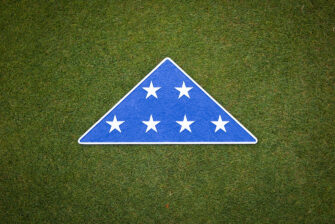
In reality, however, the real history of the club began about 14,000 years ago, when the titanic glaciers covering much of the Midwest began receding, moving ever-so slowly across this region. Those giant sheets of ice began dredging up and gently depositing sandy soil all across West Michigan’s coastline, creating towering dunes, beautiful beaches, and simply one of the most scenic areas in America.
Fast-forward a few thousand years, to a hot July day in 2010. I was riding in a golf cart with then-Major Dan Rooney, during one of his Folds of Honor Foundation’s Patriot Day charity events, at his father John’s Grand Haven Golf Club. Rooney was a hotshot Air Force fighter pilot who’d flown three tours in Iraq and Afghanistan, before coming home and eventually creating the Folds of Honor in 2007, providing educational scholarships to spouses and children of America’s deceased and disabled service members. To date the organization has given more than 28,000 scholarships worth more than $140 million.
In addition to being a fighter pilot/philanthropist, Rooney’s also an exceptionally gregarious guy and a PGA professional, to boot. Our conversation eventually landed on the potential of his father’s golf course. The original routing carved narrow corridors through thousands of tight, towering pines, framing fairly nondescript fairways and pedestrian pushed-up greens.
“The land this course is on is phenomenal,” I explained, referring to the vast, sandy dunesland the club calls home. “With the right renovations, this could look like the Pine Valley of the Midwest.”
I wasn’t alone in my assessment, and just over a decade later, with Jack Nicklaus’ genius, thousands of hours of sweat and soil and a few million dollars’ investment, the newly reborn American Dunes Golf Club proves that comparison wasn’t simply hyperbole.
The reimagined, reborn American Dunes is a dramatic departure from the original, replacing the tight, tree-lined course with a bold, beautiful sandscape that has every corner of the golf world suddenly abuzz.
Nicklaus, who carved out his niche as an architect by building bold, fearsome courses over the past 40 years, has a kinder, gentler winner this time around.
“If I can take a golf course and make it aesthetically pleasing so people enjoy it, and put good golf shots into that aesthetically pleasing place, I’ve accomplished what all golfers should like,” Nicklaus said. “That’s what I try to do.”
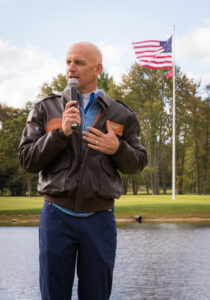
Lt. Col. Dan Rooney
MISSION ACCOMPLISHED
The new American Dunes might be one of the Bear’s very best designs, a beautiful blend of style and substance, strategy and playability. Now owned by the now Lt. Col. Dan Rooney, American Dunes is designed to draw nationally as well as regionally, and will be a living tribute to fallen or disabled military veterans.
Rooney approached Nicklaus in February 2018 to help turn his struggling Grand Haven Golf Club into American Dunes LLC, a fundraiser for Folds of Honor. Nicklaus listened for a few minutes, cut off Rooney mid-pitch and not only agreed to design the course, but waived his usual $3 million design fee.
“I didn’t get to serve in the military,” Nicklaus said. “I was married when I was 20 years old and (oldest son) Jackie was born when we were 21. But I always loved what the military represented and what they did to protect our freedom. When Dan came down to ask me, I knew there was no way I was going to say no. I was honored that he asked me to be part of it.”
American Dunes honors America’s heroes on-course and off.
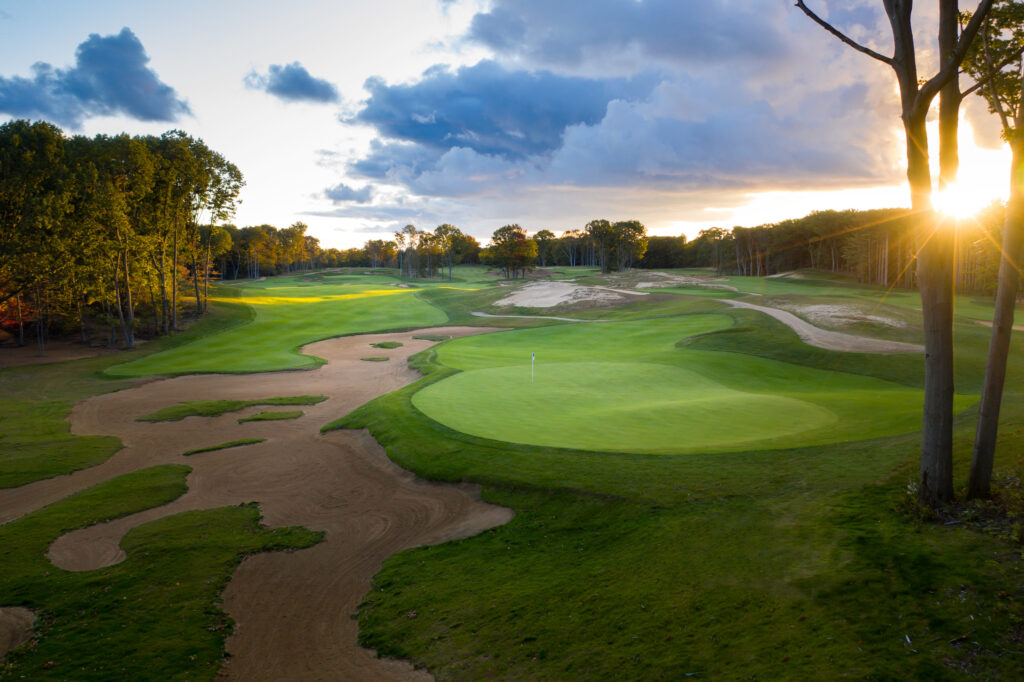
The fantastic, 503-yard, par-5 16th hole is part of American Dunes’ sandy, special closing stretch.
One hundred percent of the profits at American Dunes will go to Folds of Honor. At 1300 hours (1 p.m.) every day, Taps will be played and the entire course will come to a standstill for 21⁄2 minutes while a bell tolls 13 times, signifying the 13 folds that bring the flag to its triangle shape. Boot-prints are even stamped into the concrete around the clubhouse to honor the fallen.
American Dunes was designed to be a tribute, a symbol. But to be the national draw it was intended to be meant American Dunes needed to be more beauty than beast — a departure from Jack’s architectural trademark for more than four decades.
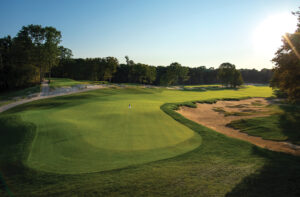
American Dunes’ sweeping, 560-yard sixth hole is part of an impressive “Amen Corner”-style stretch on the front nine.
“I think the average golfer is interested in the experience, interested in having fun with their friends, interested in walking away having (had) an enjoyable day,” Nicklaus said.
It might have been designed with the average player in mind, but that’s the only thing average about American Dunes, which should be on the shortlist of best new designs in the world when it opens its arms to the public May 2.
The new course expands on the footprint of the former track by nearly 400 yards, now offering five sets of tees from 4,754 yards to 7,213. Jack and team took out more than 1,000 trees throughout the course, peeling back the turf, and transforming it into the stunning sandscape we see today.
A DAY AT THE BEACH
The course bears almost no resemblance to the original, save for a few holes the elder Rooney had redesigned after he bought it in 1998. The rest is a complete overhaul and dramatic upgrade, taking nearly two years to complete, as the former Grand Haven GC closed for play in 2018 before its rebirth began in the spring of 2019.
The opening hole is a genteel, 374-yard par 4, with a straight shot framed by a sandy swath all along the left side and grassy mounds on the right. The hole was formerly the redesigned 10th hole of Grand Haven Golf Club, but now provides a fitting opening salvo and preview of what’s to come.
American Dunes might be nearly entirely new, but it also flip-flopped the footprint, with the new No. 10 in place of the old No. 1.
The second hole is a big, beefy, 539- yard par 5, wrapping around a lake on the right side, while the 395-yard third offers an expansive view and the first up-close look at Jack’s stellar sandtraps strewn about so liberally here.
But it’s the 173-yard, par-3 fourth hole where the fun really begins.
Perched on one of the highest points in all of Ottawa County, the fourth tee offers a panoramic view of a vast sandscape below you, a three-hole convergence that could be considered American Dunes’ version of Amen Corner.
After the fun-filled fourth, with a tee shot that drops out of the sky to the good-sized (but heavily guarded) green, you backtrack a bit to the tee of the 475-yard, par-4 fifth, which shares a lake and enormous bunker complex with the 560-yard sixth.
Other highlights on the front include the 178-yard, par-3 seventh, which essentially shares a double green with its twin 198-yard 12th hole, and the 413-yard, dogleg-right ninth, which wraps its putter-shaped green around an enormous new lake. But make no mistake, Jack saves the best for the back at American Dunes.
The 10th hole will be an (acid) trip down memory lane for those who played the original course. What was once a tight, tree-lined hallway to a nondescript green, is now a beautiful, 410-yard beast, featuring a forced carry over that lake it shares with No. 9, finishing astride a huge waste bunker guarding the green. Wow.
The remainder of the back nine is just as dramatic, with seas of sand around every corner. Nearly every tee shot features a forced carry over a sandy expanse, from the tight targets of the 381-yard 11th, to the monstrous, 678-yard 13th, a par 5 featuring a wide waste bunker along nearly the entire right side, before culminating in a heavily bunkered, postcard green.
While Nicklaus plays the club’s pacing like a harp throughout — short par 3s followed by big, beefy par 5s and drivable par 4s, and so on — American Dunes’ closing stretch is a crescendo.
The 15th is a stellar, 220-yard par 3 with essentially an island green, awash in a sea of sand, the deceptively small green heavily sloped from back to front. From there you find the club’s terrific twins, the 503- yard 16th, and the 429-yard 17th, a pair of fearsome fours that share a massive dune between them.
American Dunes’ finishing hole is an inspiring new take on the original, stretching it from a 450-yard par 4, to a 536-yard, reachable par 5. To get home in two, you’ll need to first navigate the needle-nosed tee shot akin to Augusta’s 18th, followed by a knee-knock- ing second shot to the small green guarded by the lake it shares with No. 9.
If there’s any doubt about where Jack’s inspiration came from for American Dunes, it’s put to rest and printed on the course scorecard itself.
“I love the game of golf, but I love my country even more,” Nicklaus is quoted in big, bold red.
As you shake the sand from your shoes, unshakable smile still on your face after your round, you know that most of all, American Dunes is the perfect tribute to both.
Visit www.americandunesgolfclub.com for tee times and more information. Gary D’Amato contributed to this report.
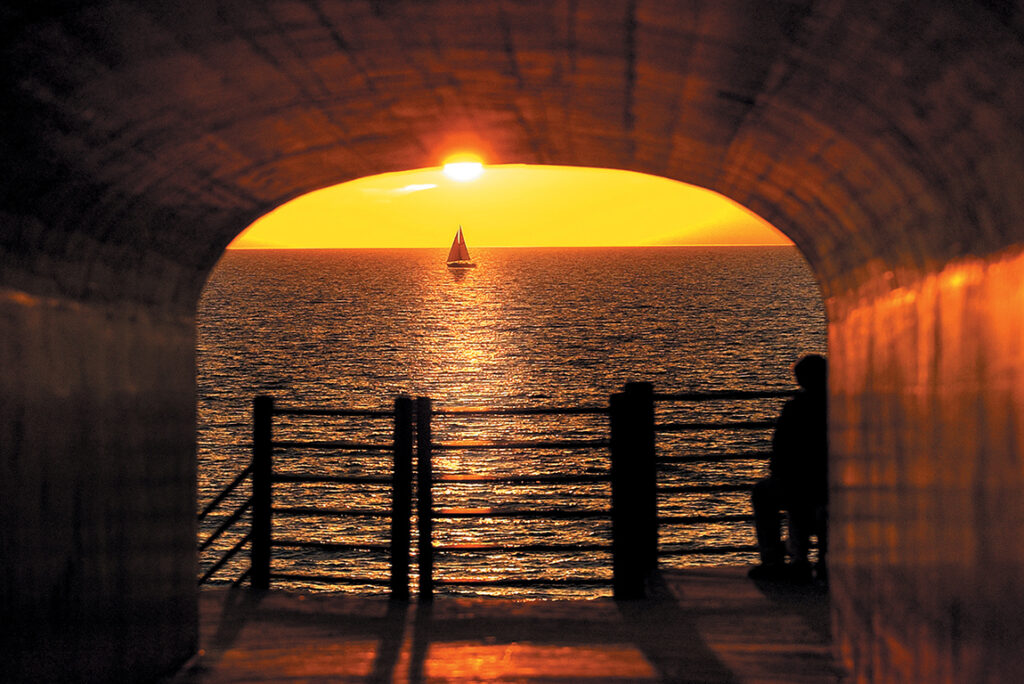
Ottawa County’s underrated Tunnel Park.
Grand Haven
Welcome to Coast Guard City, USA
Believe it or not, Grand Haven was a tribute to the military long before American Dunes was growing grass. The charming tourist town is also known as “Coast Guard City, USA,” and home to its annual Coast Guard Festival every summer, spanning the last week of July and first week of August.
Here’s a few other things to see and do-not-miss during your visit:
A DAY AT THE BEACH
1001 S Harbor Dr, Grand Haven
It’s safe to say you wouldn’t be reading this right now without the 48-acre stretch of golden sandy beach now known as Grand Haven State Park. The park has been rated one of America’s best beaches, played host to professional volleyball circuits, and is a can’t-miss summer hotspot that put the area on the map.
101 N Harbor Dr, Grand Haven
Got the kids in tow on your golf trip? Good. Head down to the harbor at nightfall for some family-friend- ly fun, with the world-famous Grand Haven Musical Fountain. Playing a variety of classic songs perfectly choreographed with dancing water and lights, it’s been a family favorite for nearly 60 years.
Tunnel Park
66 N, Lakeshore Ave, Holland
Psst. C’mere. Want to know the best-kept secret in
all of Lake Michigan’s shoreline? It’s this hidden gem of a beach right here in Holland, just south of Grand Haven. Tunnel Park is a county park with a world-class view and intimate atmosphere. You literally walk through a tunnel underneath a giant dune, only to be met by an incredible panoramic on the other side, in this quiet, cozy beach. But don’t tell anybody, OK?
EATS & TREATS
The Kirby House
2 Washington Ave, Grand Haven
A longtime staple on the Grand Haven dining scene, the Kirby House offers fan-favorite cuisine — every- thing from pizza to stir fry to burritos — in a casual, lively atmosphere.
20 N Beacon Blvd, Grand Haven
If you want the best burgers, fries and variety of shakes and malts in the Midwest, you simply can’t miss a trip to Ray’s Drive-In. It’s an old-school stop with an out-of-this-world bite of nostalgia.
41 Washington Ave STE 160, Grand Haven
Don’t miss one of Michigan’s best small brewers: Odd Side Ales. Odd Side’s famous for its eclectic recipes, including Frank the Tank IPA, Dank Juice and Bean Flicker Blonde. Yum!
1223 S Harbor Dr, Grand Haven
One of the finest restaurants in the area is also the newest, after a fire leveled the original and beloved Bil-Mar. The new Noto’s at the Bil-Mar offers an updated, upscale menu, with an unbeatable view right on the beach.
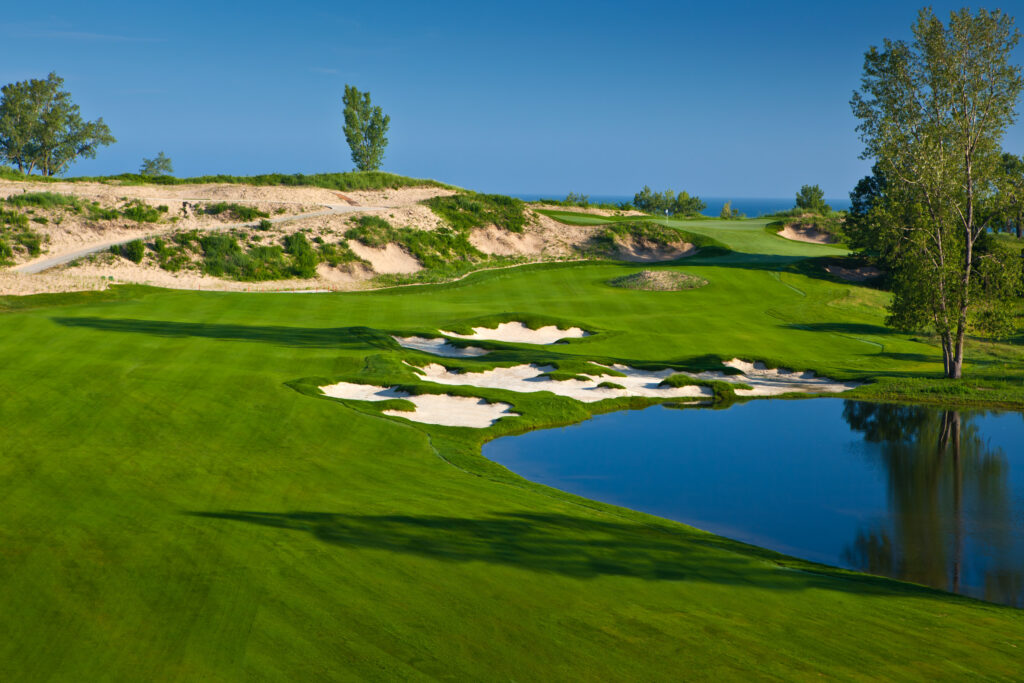
Harbor Shores. Photo by Nile Young Jr.
Back-to-Back Jack
Nicklaus’s Harbor Shores Golf Club gives Michigan’s western shore a double shot of Jack
By Gary D’Amato
Ben Hogan winning the 1950 U.S. Open after a near-fatal car accident and Tiger Woods winning the 2019 Masters to end an 11-year drought in the majors were nice comeback stories. But the biggest comeback in golf history may well be the remarkable transformation of a godforsaken site in depressed Benton Harbor.
When Jack Nicklaus first saw the land that would become Harbor Shores, he said, “Where do you expect me to build this golf course?”
Everywhere he turned, he saw the rotting hulks of dilapidated factories and burned-out buildings, dumpsites and tangles of overgrown brush. A section of the land had been designated a Superfund site by the U.S. Environmental Protection Agency.
Once an industrial hub, Benton Harbor had fallen on hard times. During a severe economic downturn in the mid-1980s, more than 6,000 jobs were lost over an 18-month period. The city shriveled up and left a carcass rotting with crime, drug use, unemployment and desperation.
Whirlpool Corp., one of few companies that didn’t flee the city, and community leaders bet the ranch – in this case, $900 million in strategic investments – on Harbor Shores Resort and a surrounding 550-acre residential and recreational development.
Today, Harbor Shores is a shining example of how a golf course can help transform a community. A portion of green fees are used to maintain Jean Klock Park, its beach and a 12-mile walking path. The park now generates more than $150,000 annually for the city of Benton Harbor.
Revenues above operating expenses are given back to the community for job training and educational programs. The First Tee of Benton Harbor, headquartered at Harbor Shores, is the only fully subsidized program of its kind in the Midwest. Visiting golfers can stay at The Inn at Harbor Shores, a 92-room luxury hotel, or in villas on the course.
Joshua Doxtator, the general manager at Harbor Shores said three million square feet of industrial waste and materials and contaminated soil – enough to fill a football field 80 feet tall – had to be cleaned up before Nicklaus’ crew could start on the course. In 2008, the property had a state equalized value of $0; by 2017, the same land had a taxable value of nearly $37 million.
Harbor Shores opened in 2010 and has played host to the Senior PGA Championship in even-numbered years since 2012 (last year’s event was canceled by the coronavi- rus pandemic). It’s a big, brawny championship course that’s a blast to play.
The three-hole stretch starting at No. 7, built along and atop a soaring dune near Lake Michigan, is as good as it gets. The seventh is a short but tricky par-4 with an elevated green featuring a sharply sloped false front. Just beyond is a pristine beach, once strewn with trash and hypodermic needles. The eighth is a dogleg right par 4, with the tee shot struck from the high point of the dune down to a partially hidden fairway. And No. 9 is a dramatic par 5 with another elevated tee box.
As we putted on the 15th green, a couple of kayakers on the once-polluted Paw Paw River paddled closer to watch. It struck me that golfers and kayakers experiencing the great outdoors here once would have been unthinkable.
How’s that for a comeback?
For more information or tee times, visit www.harborshoresresort.com.
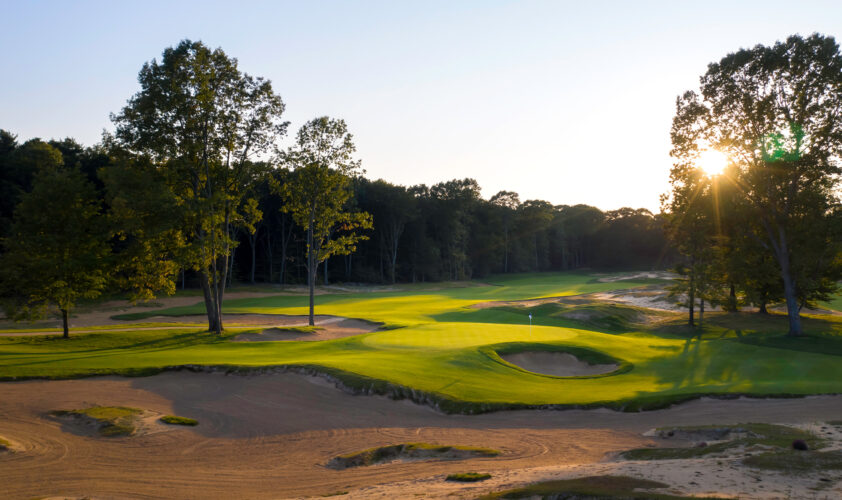
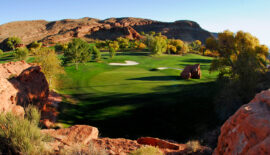 ';
';
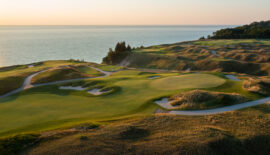 ';
';
 ';
';
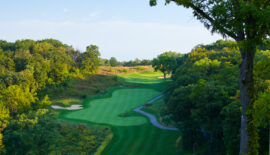 ';
';